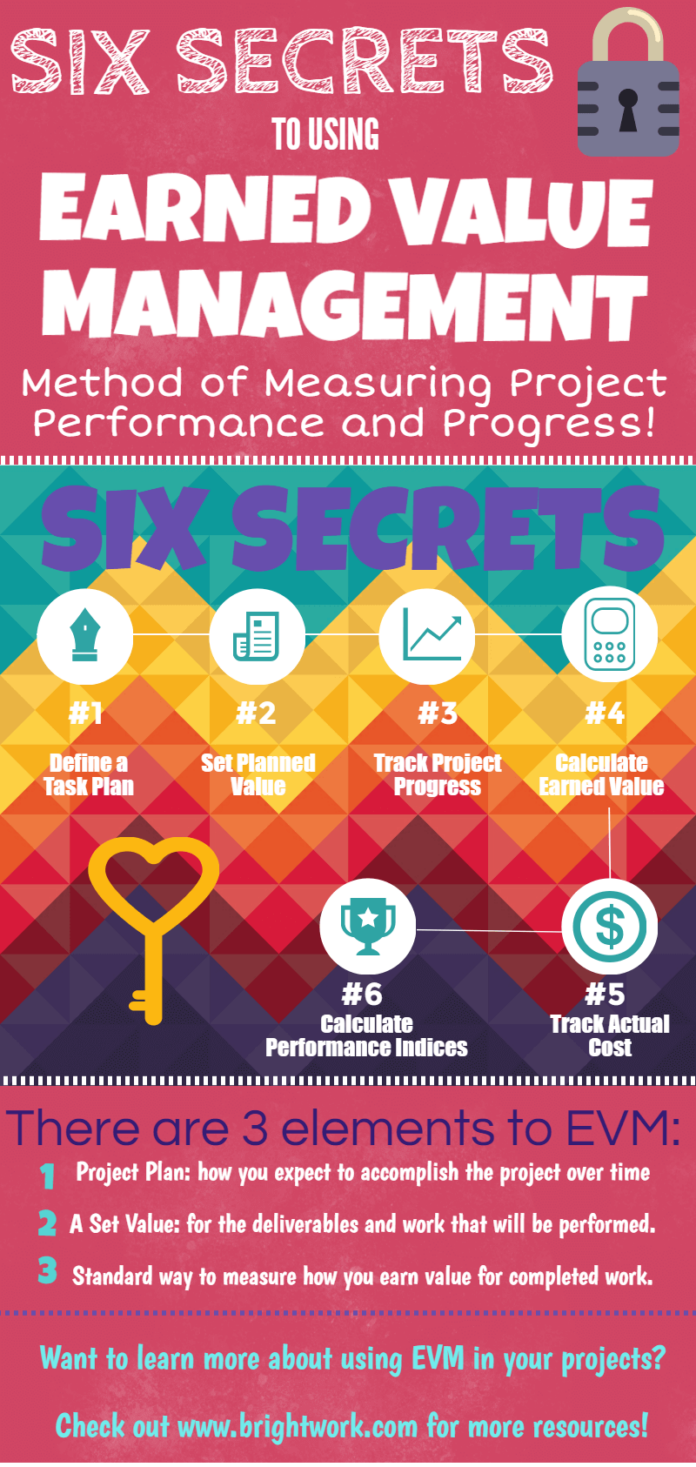Earned value is the value assigned to work. This can refer to time or money. But Earned Value Management is a tool that measures performance and forecast it by comparing the gap between what really happened and what was planned. Since it keeps the records of budget and schedules, it can predict how future projects will do. Earned value management provides stakeholders with additional information about the status of a project by comparing actual time and money spent versus planned hours and budget. Earned value and EVM were developed and used by the US Department of Defense to track its various tracks, including NASA, in the 1960s.
You might also like: WHAT IS A PROJECT MANAGEMENT SCOPE?
How to Calculate Earned Value in Project Management
One of Earned Value great advantages is that it tells you whether you’re behind in schedule or on your budget. It’s calculated by multiplying the percentage of completed by the total project budget. Let’s assume you’re project is 50% complete, and your budget is 50k$. then you’re earned value is 25k$. But this isn’t every thing, to make the most out of it, you should consider more calculations. Those are: Cost Schedules and Variance Analysis.
Schedule Variance:
Schedule variance is the difference between your planned achievements and actual achievements. Take this example, you have a 16-week-long project, 8 weeks have passed already. But the project is 25% complete. In this case, your EV = 4 weeks. and your PV = 8 weeks. Therefore, SV = 1-2 = -1. Since you have a negative result, it means you’re behind.
Cost Variance(CV):
Cost variance, like SV, is the difference between what you planned to spend and what you actually spent so far. CV is calculated as CV = EV – AC (actual cost). Let us return to the previous example. Your project budget is $100,000, and you are 60% finished, so your EV is $60,000. If you’ve already spent $70,000 on the project, your CV is worth -$10,000. You can tell if you’re over budget because the number is negative, which could indicate a problem with the project or that it will go over budget or run out of funds.
Schedule Performance Index (SPI):
This measure is similar to SV, but it is frequently preferred because it converts numbers into a value that can be easily compared across tasks or projects. SPI is calculated as SPI = EV/PV. When SPI is greater than 1.00, you are ahead of schedule. You’re behind if it’s less than 1.00. In the previous example, SPI would be 1/2 = 0.5. Using SPI is not the same as simply comparing your progress to your baseline. When you compare your actual schedule to your plan, you may notice that you are behind on two tasks. So you know where your immediate issue is, but not how it affects the overall project or your projected completion date.
You might also like: PROJECT MANAGEMENT, WHY IS IT SO IMPORTANT?
